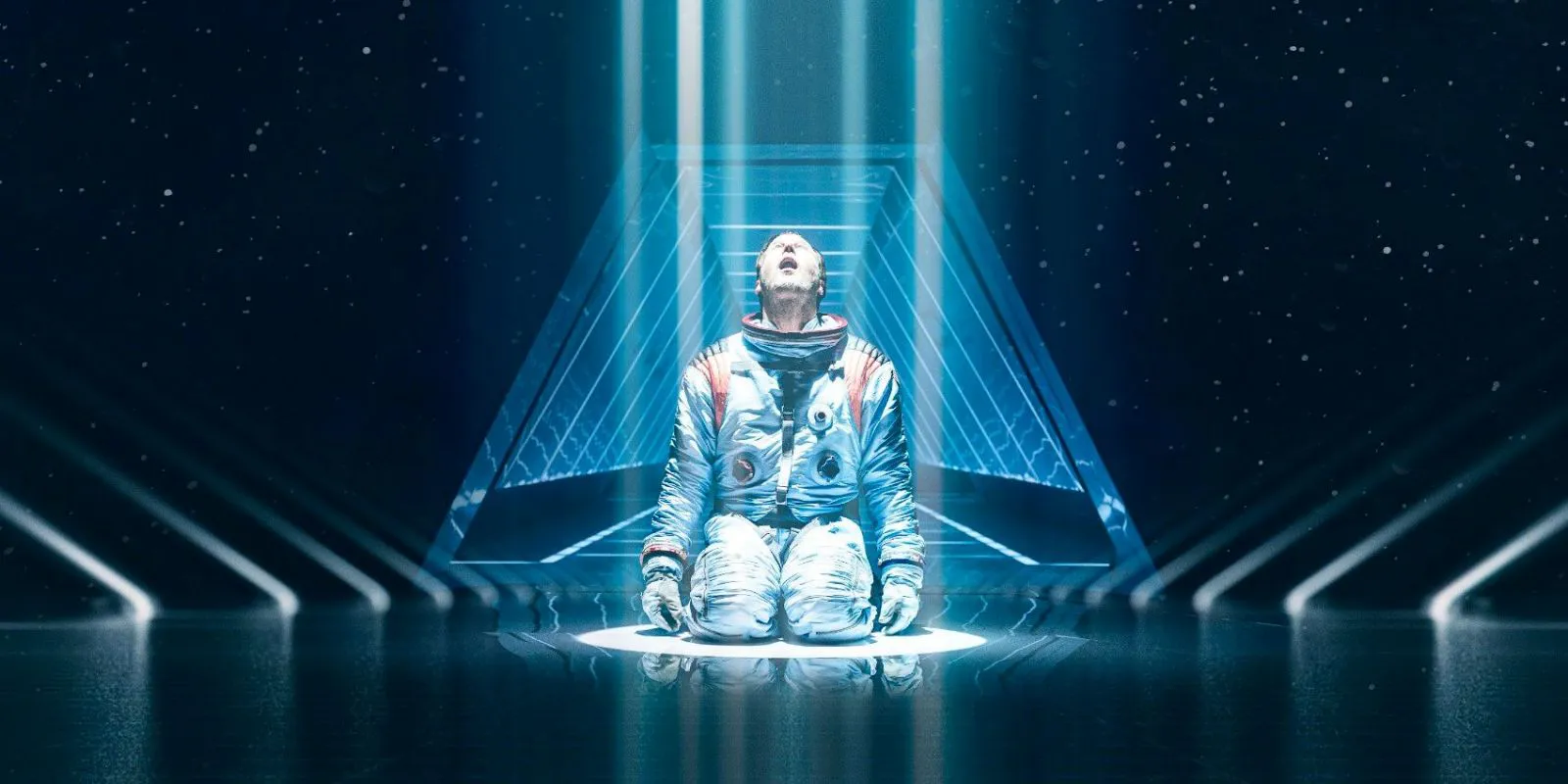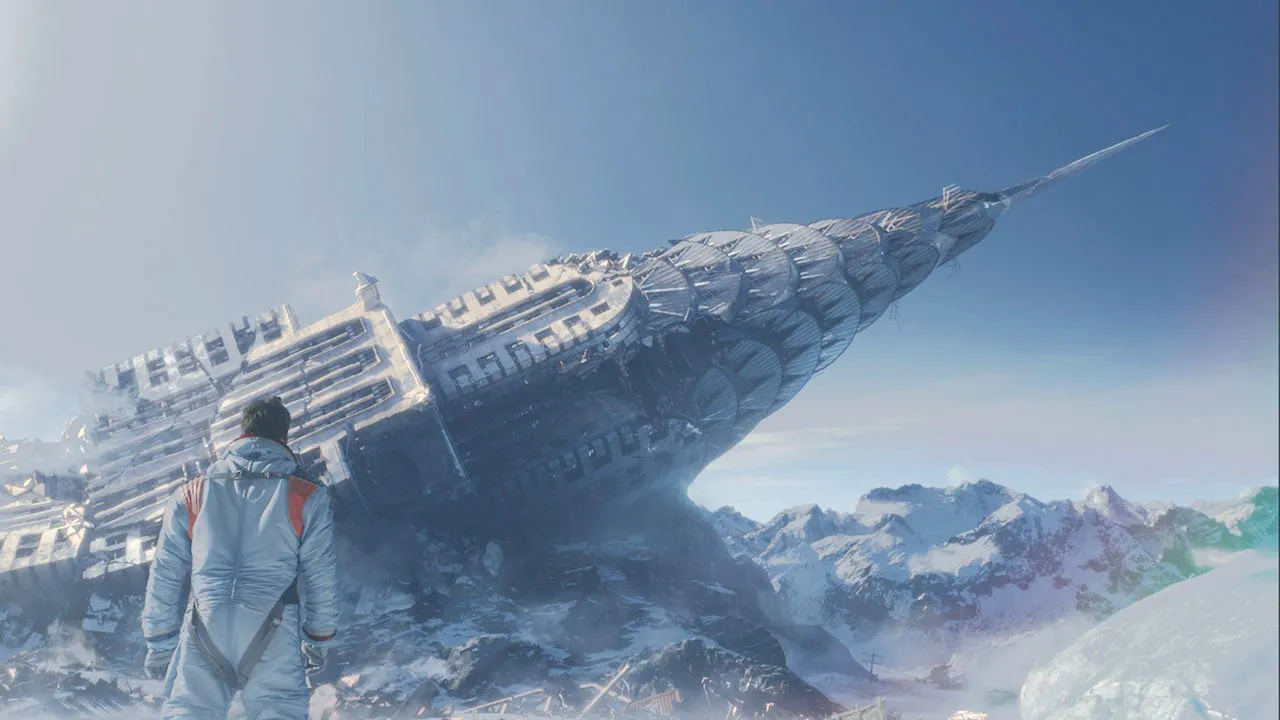“Every director makes the same film throughout their life” – this common phrase aimed at many filmmakers might sound like a lazy generalization, but not for Roland Emmerich. It seems he’s even proud of such a status. “Independence Day,” “2012,” “The Day After Tomorrow” – time and again, Earth on the brink is saved by an unwilling hero. Going to the cinema for “Moonfall” is the most honest deal: if you’re ready to watch another sweeping disaster film, you’ll get exactly what you expect. If the chronicle of civilization’s demise tires you, then don’t even bother starting to say goodbye to the world.

Patrick Wilson as Brian in a still from “Moonfall”
The Premise of Moonfall
So, the Moon, in a spiral thread, gradually descends from its orbit and approaches Earth: gravity rebels, tides wash away cities, and NASA throws up its hands. The reason for the change in course of the faithful satellite is hidden somewhere in the craters of the Sea of Crisis, and one person knows for sure: the savior of the world in the future, and for now, retired astronaut Brian Harper (an unshaven Patrick Wilson in a leather jacket looks like an aging rock star). He was once tried for negligence and suspended from flights after a fatal incident. While Harper suffered from the injustice of the world and felt sorry for himself, his mission partner Jo Fowler (Halle Berry hasn’t changed in the last 30 years) built a career in the space agency. The rescue crew lacks a flight engineer – it will be the accidental genius KC Houseman (John Bradley) – another favorite type of Emmerich, dating back to Jeff Goldblum’s character in “Independence Day.”
Ode to Geeks and Dreamers
“Moonfall,” if you step away from the scale and eternal threats to planetary peace, is a kind of ode to all the geeks and dreamers who will one day be noticed. Emmerich glorifies these very fanatics and people, sometimes hopelessly in love with their work, picture after picture. Where corporations, the government, and frowning scientists miss red flags, dreamers never stop believing in assumptions and invent new patterns of the universe.

Patrick Wilson as Brian in a still from “Moonfall”
Internal Logic and Genre Play
But no one suggests taking the proposed concept of the Moon’s structure seriously: Emmerich is not Nolan, science is not needed here. But a cameo by David Duchovny at a local MUFON meeting would have been very useful. Dr. Houseman (as the character calls himself) is a direct heir to the “Lone Gunmen” from “The X-Files,” with his philosophy and alternative ways of obtaining top-secret information. Despite the absurdity of the threat model itself (we won’t even try to retell it), the film accurately obeys internal logic: each new attempt to straddle gravity instead of initial bewilderment gradually begins to evoke childlike delight. This naivety and infallibility of faith in one’s own convention discard any skepticism – on the screen is a big genre game, with many references to any pop-cultural mentions of the Lunar conspiracy (without “The Shining” and “Space Odyssey” either).

Halle Berry as Jo in a still from “Moonfall”
Nostalgia for the End of the World
Emmerich seems to still live in 1995, which can only be envied. The same patriotic values and family problems, the same altruism and the same jokes: no pandemic, only a fantastic end of the world - so far-fetched that it is impossible to believe that one day the Earth may really come to an end. All the destruction, on the contrary, looks saving and becomes a kind of comfort zone: it’s all pretend, Armageddon does not threaten us.
Let the cataclysms look epic, sometimes very beautiful (for example, a ball of the Moon touching the snowy tops of the mountains) and monstrous, but still completely unrealistic. “Moonfall” is an absolutely “catastrophic” movie: someone may get old-school cramps, and someone will certainly cough from the persistent smell of mothballs. But there is something in today that makes Emmerich’s films affectionately nostalgic and makes you miss the good old end of the world.